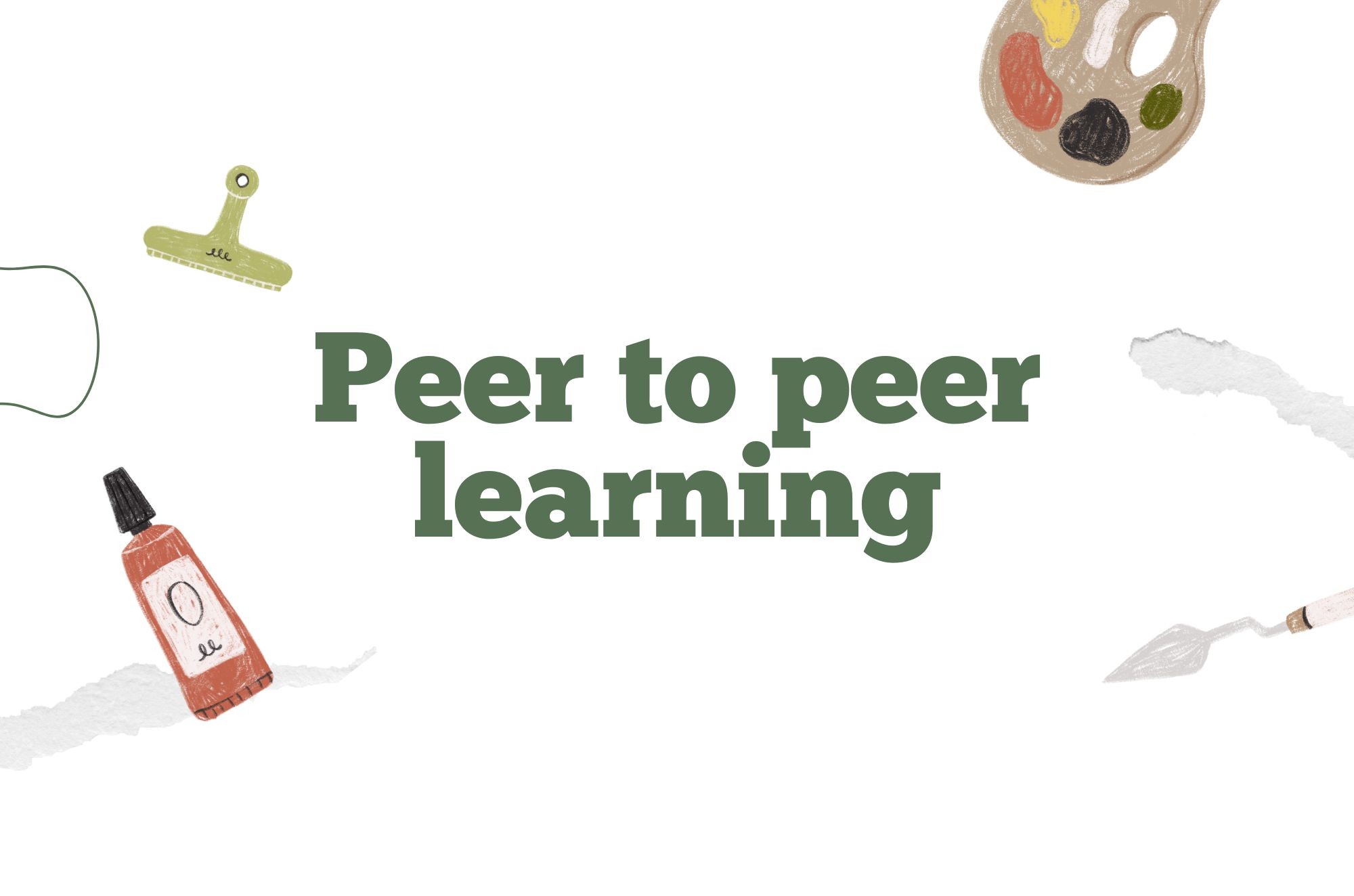Introduction
If you’ve ever attended an in-person corporate training session, then you’re probably familiar with how they can drag on all day—packed with slides, lectures, and lengthy discussions. Despite the potential benefits, such sessions require significant investments in travel, venue costs, and instructor fees—raising concerns about whether the return on investment matches the expense.
Fast forward to today, the world of professional development has drastically changed. More companies are embracing a flexible approach—offering learning experiences “on-demand,” accessible 24/7 from our laptops and smartphones. This evolution didn’t happen overnight. Rather, it was fueled by the rise of mobile technology, shifting workforce demographics, and, most recently, the pandemic that pushed us all to adapt to remote work. Now, on demand learning has become more than just a buzzword; it’s a necessity for organizations looking to stay competitive and employees eager to grow.
In this article, I’d like to share my personal journey transitioning from those lengthy in-person sessions to discovering the power of on-demand, microlearning, and AI video tools. If you’ve been on the fence about adopting new methods to train your team or to advance your own skill set, stick around. I’ll walk you through why on-demand learning is changing the game and how you can make the most of these innovative resources.

The Roots of On-Demand Learning
Contrary to popular belief, on-demand learning isn’t as “new” as it might seem. If you look back at how trades were taught centuries ago, you’ll find a simple form of on-demand learning present in the day-to-day mentorship between apprentices and masters. They’d learn by doing, asking questions at the moment they needed guidance—a timeless example of learning in the flow of work.
Fast forward to the era of corporate training, and you see a shift toward scheduled programs: multi-day workshops, classroom-style lectures, or those classic “orientation weeks.” While these served their purpose, they often lacked personalization, forcing everyone to learn at the same pace regardless of individual skill levels.
The pandemic accelerated the move away from these traditional models. HR departments and Learning & Development (L&D) specialists realized that while face-to-face instruction has merits, it isn’t always feasible—especially for remote or global teams. When an employee needs a quick answer, they don’t want to sift through a manual or wait for the next big training event. They want a direct, bite-sized solution right then and there. That’s where on-demand learning truly shines.
What Exactly Is On-Demand Learning?
Let me share a simple scenario. Imagine you’re about to finalize a sales pitch, and you need to recall how to create a compelling closing statement. You could go to your video LMS or YouTube, type in “closing statement tips,” and watch a short, focused video. Within minutes, you’re ready to apply what you’ve just learned. That is on-demand learning in a nutshell: immediate, relevant, and accessible whenever (and wherever) you need it.
Rather than requiring you to attend an all-day workshop, on-demand learning delivers material in short, digestible modules—often referred to as microlearning. This approach is vastly different from traditional, instructor-led training, where the pacing is determined by a trainer rather than the learner. By switching the control to the individual, people can learn on their own time, at their own pace. It’s an approach that resonates strongly with modern employees, especially millennials, who already rely on technology in virtually every aspect of their lives. If you’re interested in exploring a comparative take on instructor-led training vs e-learning (on demand learning), then checkout the following video:
Even before remote work became the norm, companies began noticing that employees are more engaged when they have autonomy over their learning experience. After all, why listen to an hour-long lecture on advanced negotiation if all you need is a two-minute refresh on setting price anchors?
Why On-Demand Learning Has Become Essential
If you’re reading this, there’s a good chance you’re either an L&D professional trying to improve your company’s training program or an individual eager to take charge of your personal development. Either way, on-demand training is essential for modern workplaces—and here’s why:
1. Millennials in the Workforce
Millennials comprise about half of today’s workforce, and they bring high expectations for digital integration in the workplace. These “digital natives” grew up with apps and smartphones, so naturally, they expect corporate training to resemble the intuitive apps they use every day. Traditional, one-size-fits-all programs rarely hold their attention. On-demand, mobile learning solutions, on the other hand, feel more personalized and are easy to integrate into busy schedules.
2. Remote Work Is Here to Stay
Over the last few years, we’ve witnessed a surge in remote work. In my own experience, I’ve worked with teams scattered across different time zones. Scheduling in-person training (or even live Zoom calls) becomes a logistical nightmare. On-demand learning ensures that employees can access materials at a time that suits them—whether that’s early in the morning or late at night. For deskless or mobile employees, it’s a total game-changer. They can complete short lessons between client visits or during downtime, maintaining productivity and engagement.
3. Improved Knowledge Retention
We’ve all been there: sitting through hours of training only to forget most of it by the next day. Research shows that microlearning—short, focused bursts of training—significantly improves retention. Why? Because learners apply the knowledge immediately. When you watch a 3-minute video on how to use a new software feature and then practice it right away, you’re far more likely to remember the steps.
4. Cost-Effective Training
Traditional instructor-led training can carry hefty price tags. Travel expenses, venue costs, equipment rental—not to mention the opportunity cost of employees stepping away from their day-to-day responsibilities. I’ve seen companies pour millions into massive events only to realize the ROI was minimal because employees felt overwhelmed by the amount of information dumped on them in a short window. On demand learning allows organizations to invest in flexible, often more affordable digital platforms that can be updated easily. You pay once for the tool (or monthly subscription), and then you can roll out training materials to as many people as you need—almost instantly.
💡 By shifting from classroom training to on demand training, Dow Chemical cut costs by $34 million and reduced per-learner course expenses from $95 to just $11.
Microlearning: Small Bites, Big Impact
It wasn’t until I tried microlearning myself that I realized how effective it is. The idea is simple: break down complex topics into short, manageable, bite-sized lessons that you can complete in just a few minutes each day. Our attention spans are limited, and trying to absorb too much information at once is counterproductive.
Key Benefits of Microlearning
-
Higher Engagement: When lessons are short and interactive, people are more likely to stay focused and retain information.
-
Personalization: Microlearning modules can be easily customized to different roles, departments, or even language preferences.
-
Minimal Disruption: Instead of blocking off hours for training, employees can fit micro-lessons into natural breaks throughout the workday.
Ever since I integrated microlearning into my daily routine, I’ve found myself revisiting modules more frequently. It takes me less than five minutes to refresh my memory on, say, the best practices for writing a concise project proposal. And because it’s on-demand, I don’t have to rely on someone else’s schedule.
The Power of AI Video Tools in Modern Learning
Now, let’s talk about the game-changer in my own on-demand learning journey: AI video generator. Before discovering them, I assumed creating high-quality video content required a lot of time, money, and professional videographers. While that may have been true in the past, new technologies have made video production dramatically simpler—and smarter.
One of the standout platforms in this space is Fliki. It uses AI to streamline the process of generating professional-grade videos. Whether you’re an HR manager creating an orientation clip for new hires or a sales leader crafting a product tutorial, Fliki is designed to eliminate the typical production hurdles—like script writing, recording, and editing.
Let me share a quick story. A friend of mine works at a multinational consultancy that needed training videos for teams in various countries. They were struggling to keep content consistent across multiple languages. I suggested him to leverage AI video tools, he discussed it with his team and they created localized versions of training modules in far less time than it would have taken to hire translators and voice actors. The AI handled much of the heavy lifting, allowing them to create videos that felt natural, culturally relevant, and easy to understand—without ballooning budgets.
Benefits of Fliki (and Similar AI Video Tools)
1. Ease of Use
You don’t need to be a tech wizard to produce a polished video. Modern AI video editors usually have an intuitive interface, making it simple to drag, drop, and fine-tune elements. That means less time wrestling with complicated video-editing software and more time focusing on content quality.
2. Customization
AI video tools like Fliki let you tailor videos to your organization’s needs. Choose from different AI voiceover options, visuals, and scripts to match your brand or address specific training goals. This level of customization ensures that your workplace training retains a personal touch rather than feeling generic. Just in case, if you’re thinking that AI voices will sound robotic, then I would highly recommend you to listen the following:
3. Cost-Effectiveness
Traditional video production—hiring actors, renting studios, editing film—adds up quickly. Fliki helps you bypass most of these costs. As someone who’s often had to pinch pennies in smaller startups, I can vouch for how big of a relief it can be to produce professional content without a sky-high budget.
4. Faster Turnaround
Need to update your training modules to reflect a new company policy or a software upgrade? AI video tools enable you to revise and re-release content rapidly. There’s no waiting on outsourced video teams or orchestrating big productions every time something changes.
Potential Pitfalls (and How to Overcome Them)
Of course, no tool is perfect. While AI can expedite the creation of videos, there’s still a learning curve—particularly for team members who aren’t used to digital tools. Some employees might initially resist, feeling more comfortable with traditional methods. The best way to address this is through gentle onboarding: provide short tutorials, hold “office hours” for questions, and highlight small wins (like a brief, high-impact training video you create together in minutes).
Another issue is the risk of losing a human touch if content is over-automated. It’s crucial to add personal flair—like anecdotes from real employees or brand-specific imagery—to keep the materials engaging. As advanced as AI voiceovers and animations might be, people still connect with authenticity and storytelling.
Integrating On-Demand Learning into Your Strategy
By now, you might be wondering: How do I bring these elements—on-demand learning, microlearning, and AI video tools—together into a cohesive strategy? Having experienced the rollouts in different organizations, I recommend the following steps:
1. Identify Core Learning Objectives
Start by defining your goals. Do you need to improve sales techniques, onboard new employees faster, or keep staff updated on compliance rules? By pinpointing the exact needs, you can tailor your modules to address them directly.
2. Choose the Right Platform
Whether it’s a mobile-first digital learning platform or a full-fledged Learning Management System (LMS), pick one that supports microlearning and on-demand access. Many modern solutions integrate seamlessly with AI video tools, making it easy to embed videos directly into your lessons.
3. Create or Curate Quality Content
Develop bite-sized modules that are laser-focused on specific topics. If you’re short on time, you can also curate existing resources—like YouTube tutorials, articles, or podcasts—though making your own content can help maintain consistency and branding. Consider mixing up the format with quizzes, text explanations, and interactive elements to keep learners engaged.
4. Leverage AI Video Tools for Efficient Production
Once you’ve got your scripts and outlines ready, use Fliki or a similar tool to produce videos quickly. Don’t forget to customize them! Incorporate relevant imagery and, if possible, actual team members’ voices (or leverage voice cloning) or photos for that personal feel.
💡 Checkout the best voice cloning solutions in the market.
5. Pilot and Iterate
Launch a small pilot program with a test group. Gather feedback, track performance metrics (like completion rates and quiz scores), and refine your content. The beauty of on-demand learning is that updating it is straightforward and fast.
6. Promote a Culture of Ongoing Learning
On-demand learning thrives in an environment where continuous improvement is valued. Encourage employees to share tips, additional resources, or even user-generated videos. Consider using internal communication tools to regularly nudge learners to explore new modules or revisit existing ones.
Final Thoughts
Today, our smartphones can provide us with the lessons we need, exactly when we need them, at a fraction of the cost. And if you want a more immersive experience? A quick video created by an AI tool can guide you step by step—without draining your calendar or the company’s budget.
So, whether you’re a team leader, an L&D specialist, or an individual learner, don’t let outdated training methods hold you back. Embrace on-demand learning, lean into microlearning, and experiment with AI-driven solutions. You’ll find that it fosters a culture of innovation and continuous improvement. And in today’s ever-evolving professional landscape, that culture isn’t just nice to have—it’s essential for staying ahead of the curve.



